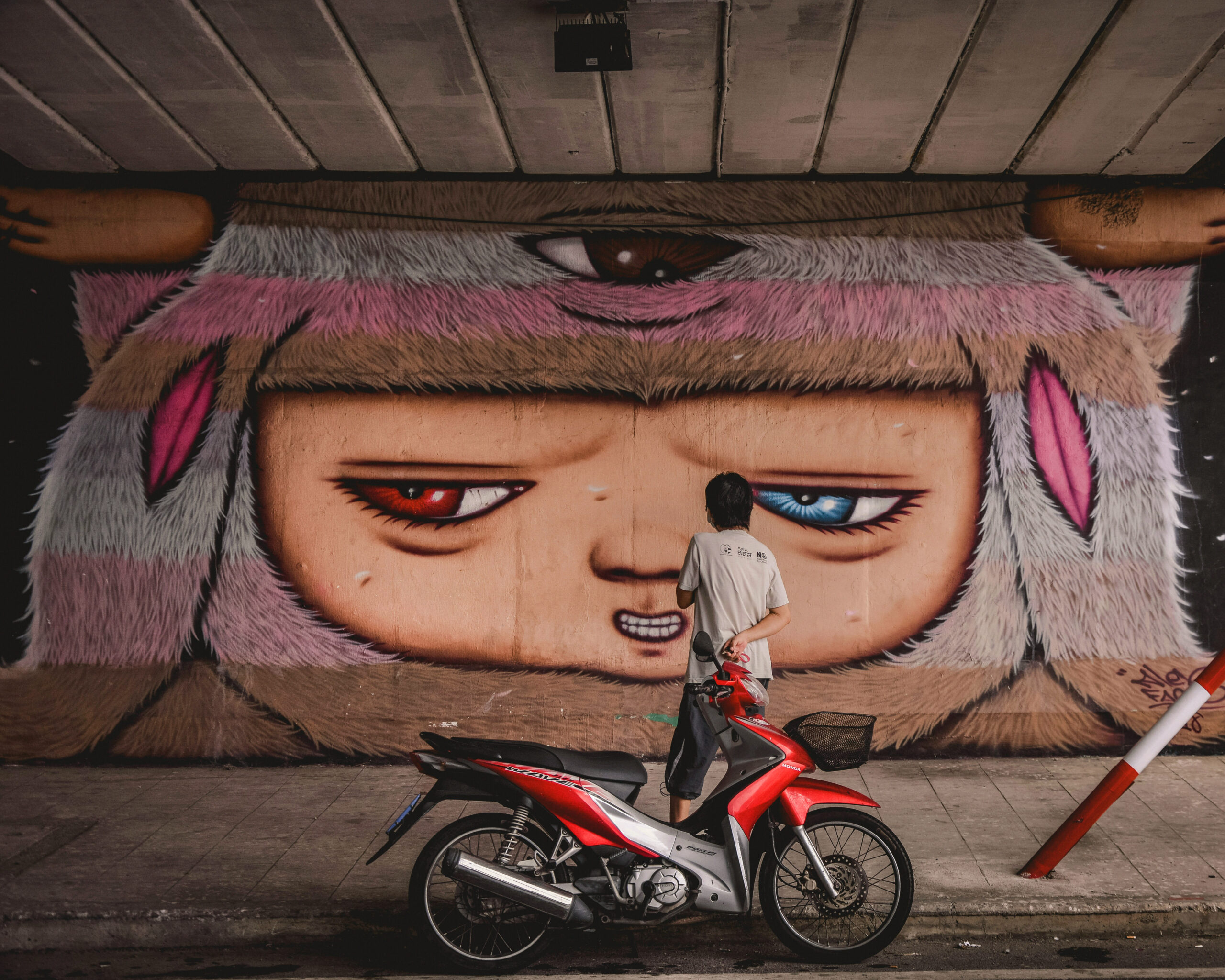
Soul of the Streets: Bangkok’s Urban Canvas
Bangkok’s streets tell stories. Walls are covered with murals, graffiti, and old paint that fade and overlap, showing how the city is always changing. Street artists work in this movement, using walls to express ideas, record the past, and claim their place. Their art moves between protest and poetry—revealing the true spirit of the streets.
by Damla Yıldırım
Urban Canvas: A Story in Layers
What once began as underground graffiti in the early 2000s has since evolved into a defining cultural force in Bangkok.
Thai street artist MUEBON recalls watching the transformation unfold over decades. “Over time, I’ve watched the city change rapidly—old neighborhoods and buildings replaced by modern skyscrapers,” he says. “Twenty years ago, street art was rejected. Today, it’s embraced and appreciated by the public.”
This transformation gained traction by BukRuk, Bangkok’s first international street art festival, launched in 2013, with backing from European embassies and cultural institutions. It brought large-scale murals into the public eye and sparked a creative dialogue between Thailand and the world. By 2016, BukRuk had expanded into talks, music, and workshops, infusing the city with fresh visual energy.
“BukRuk gave a clear picture of street art in Thailand,” says artist Rukkit. “There are some other festivals, but they are smaller in scale.” For fellow artist Alex Face, who participated in both editions, the experience was transformative: “They turned these neighborhoods into areas bursting with street art.”
The evolution of Bangkok’s visual identity is also embodied by the artists who paint it. Their stories reveal the emotional, philosophical, and, at times, political depth behind the color, the technique, and the decision to keep creating.
Voices From the Walls
Alex Face: Vulnerability of the Innocent
For over two decades, Patcharapon Tangruen, better known as Alex Face, has been a key figure in shaping Bangkok’s street art narrative. “I started spray painting in the suburbs of Bangkok in 2002,” he says, “in narrow alleys near my rented house during my university years. I then expanded to abandoned buildings and walls across the city, eventually painting large murals in the heart of Bangkok.”
His signature character, Mardi, was born in 2009, inspired by his daughter. “Mardi is my daughter’s name,” Alex explains, “but in fact, this character has no name and no gender.”
Though childlike in form, Mardi’s defining feature is a third eye. “It represents belief and superstition,” he says. “I grew up believing in things like ghosts and spirits. When I started painting it, I saw how different cultures interpret it—some see it as demonic, while others view it as a symbol of good power. Now, I see the third eye as a symbol of embracing differences with respect.”
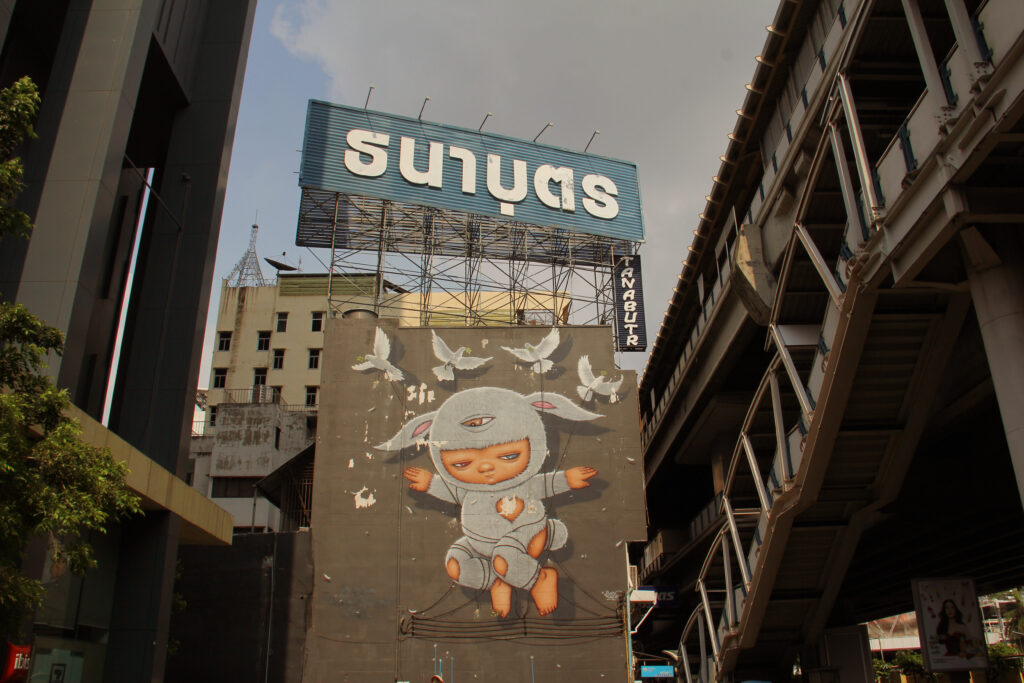
His mural Peace for Bangkok (2016), found near the National Stadium BTS station, marked his first opportunity to work at scale. The image of a dreamlike figure tangled in Bangkok’s electrical wires encapsulates a city both yearning and restrained. “I wanted to express the feeling of wanting to fly,” he says, “but being held back by the tangled electrical wires, which are so characteristic of Bangkok.”
MUEBON: The Weight of Wings
Among the boldest voices is MUEBON, or simply BON, who stands out for his sharp social commentary wrapped in playful, vivid imagery. “At university, I planned to become a full-time artist,” he recalls, “but it wasn’t easy. There was no real support for the arts.” Galleries felt inaccessible, so BON redirected his energy to the streets, painting murals where anyone could engage with them.
His visual universe revolved around Pukruk, a flightless bird with oversized eyes and a round body, always on the cusp of flight but never airborne. “Birds often symbolize freedom,” BON explains, “but not all birds can fly. It’s like the idea of freedom society says we have—it exists in theory, but not in practice.”
Pukrik’s wings are a bitter joke, propped up with balloons, spray cans, or capes, symbolizing the “extra” things society demands to actually gain freedom: wealth, connections, privilege.
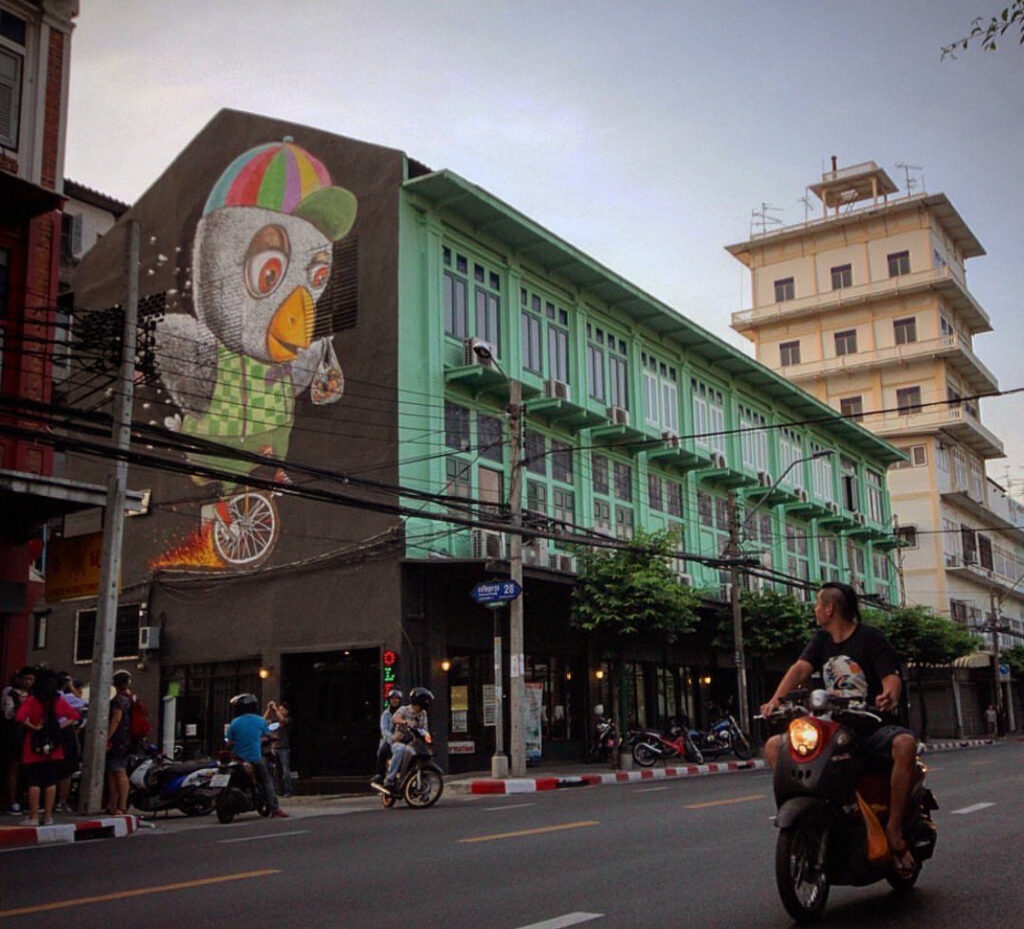
BON puts it simply: “Spray cans represent the power of art. Art helped me fly—around the world.”
His style is playful, colorful, and often oversized, designed to draw people in, then make them think. “I want people to enjoy the surface, but also question what lies beneath the cuteness,” he says. BON’s work draws from Thai society– its humor, rituals, and hidden tensions– and is always rooted in the spirit of its surroundings.
Rukkit: Geometry Within the Urban Jungle
Bangkok-based artist Rukkit Satapornvajana’s street art brings architectural precision to the city’s chaos. A graphic designer by training, his breakthrough came in 2011 when invited to paint inside the Bangkok Art and Culture Centre (BACC). “Even though it was an interior wall, the pressure pushed me to find my own style,” he says.
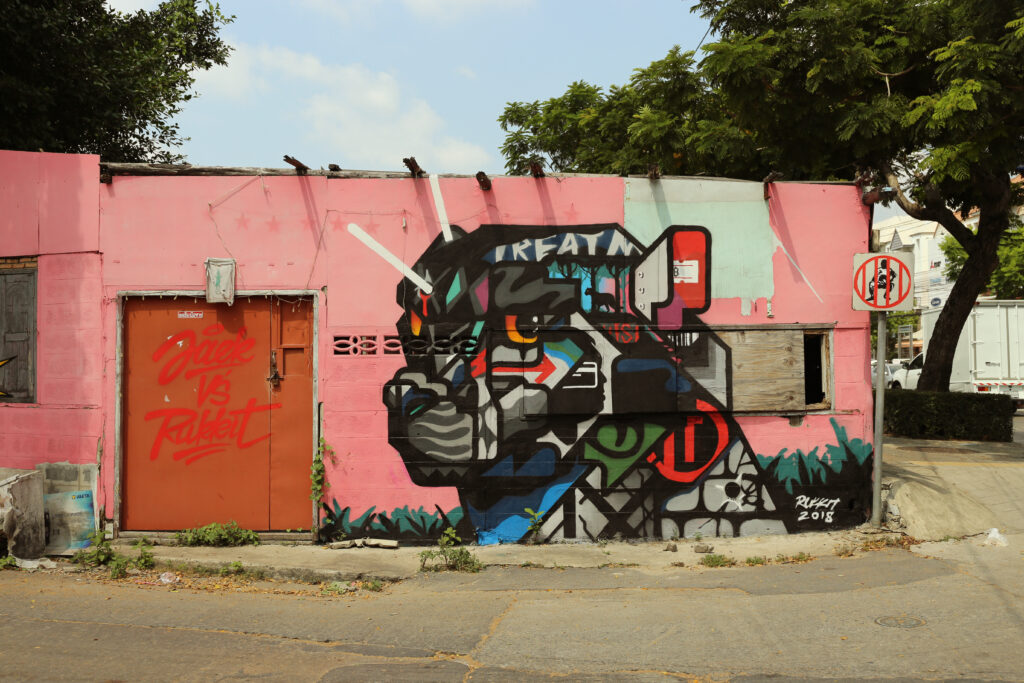
He innovated a modular stencil system composed of small reusable blocks—lines, curves, diagonals—that could be combined to create large, geometric animal portraits. “I used computers all the time,” he recalls. “When I had to paint on large walls, it was difficult, so I had to find tools to help.” That technique mindset shaped his signature process: “I spray paint these blocks together to create a larger finished piece,” he says, making each work a puzzle solved with precision.
His murals, often images of dogs, deer, and tigers, captured the city’s primal energy, structured with crisp lines and bold geometry. “Rest, relax, and enjoy,” he offers—a simple invitation to pause amid Bangkok’s relentless pace.
A City in Flux, Told in Layers
Countless artists contribute to these ever-changing canvases, all with stories to share, characters to create, and an interpretation of what the soul of Bangkok looks like.
For these artists, street art goes far beyond decoration. It is a protest, yearning, poetry, and public storytelling. The city walls speak in multiple voices. In some neighborhoods, they are bold and loud. In others, they are whispered and hidden.
The art is transient, vulnerable to weather and removal, yet each layer adds to an ongoing narrative of a city in flux.
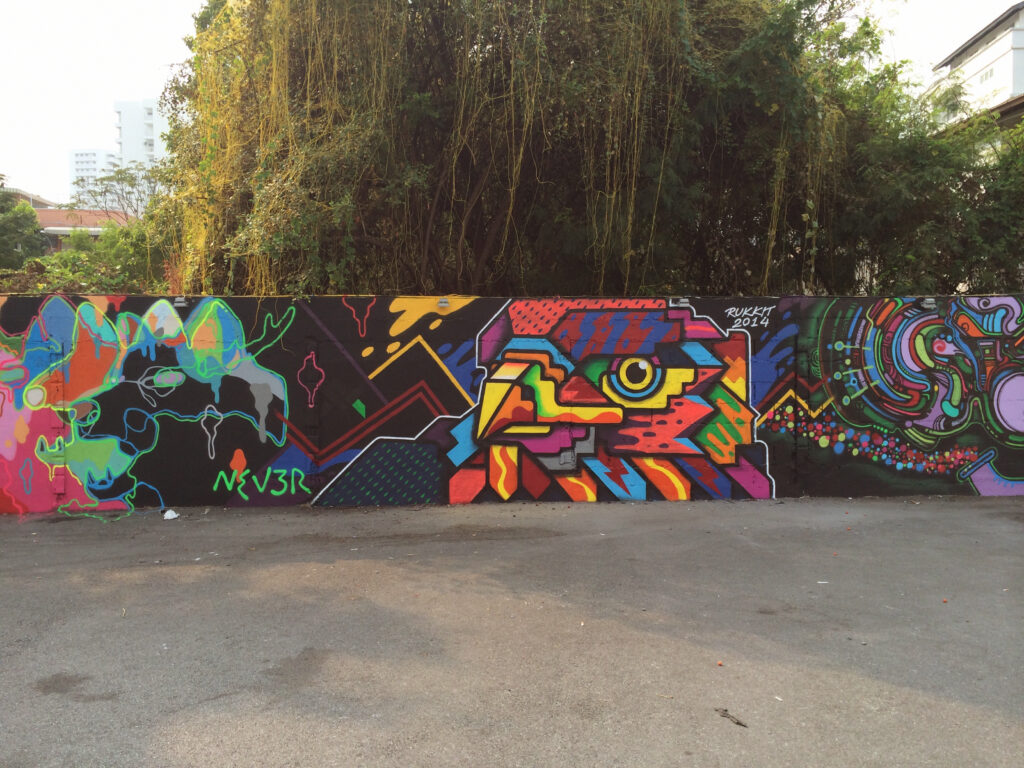
For Alex Face, MUEBON, Rukkit, and countless others working in the shadows and light of Bangkok’s streets, the city itself is their canvas and collaborator. Together, they write a visual chronicle of resilience, contradiction, and hope.
And in this city of layered stories, street art remains the loudest love letter. A restless, colorful archive impossible to ignore.
…


